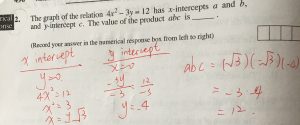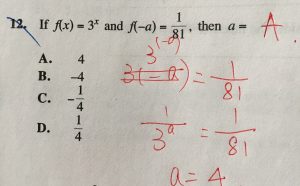This week we learned the last unit:Systems of Linear Equations. I think this can be a relatively simple unit compared to other units. Except for the occasional numbers that are a bit tricky and painstakingly cumbersome, the overall picture is fairly straightforward. Simple questions, this time you can find a simple solution to the problem, this will reduce the trouble of computing, the answer is accurate! In this unit, we solve problems that involve systems of linear equations in two variables, graphically, and algebraically using the method of substitution and the method of elimination. An alternative approach is to solve the system algebraically.There are two algebraic methods: substitution & elimination. Elimination is particularly useful when the equations involve fractions.
Numbers of Solutions:
Lines intersect at one point,1 solution
Lines are parallel, no solution
Lines are coincident, infinitely many














